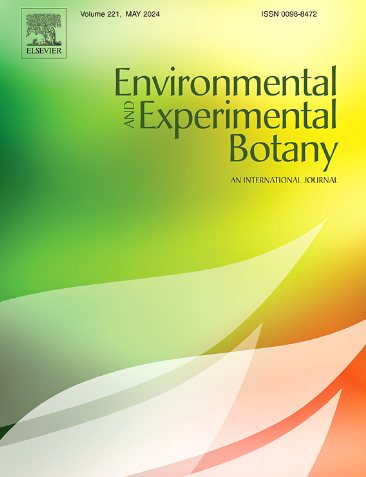Effects of ozone on leaf nitrogen assimilation and nitrogen utilization in photosynthetic apparatus of Fagus crenata seedlings grown under different atmospheric CO2 and soil nitrogen conditions
IF 4.5
2区 生物学
Q2 ENVIRONMENTAL SCIENCES
引用次数: 0
Abstract
Ozone (O3) impairs photosynthesis and growth of plants, depending on atmospheric CO2 and soil N levels. Previously, we found that CO2 exposure mitigated O3-induced reduction in maximum carboxylation rate (Vcmax) of Fagus crenata seedlings in September. This effect was more pronounced with soil N supply in July. To better understand these physiological mechanisms, we investigated leaf N assimilation and its utilization in the photosynthetic apparatus of F. crenata seedlings. Seedlings were grown with two O3 levels (low and twice ambient), two CO2 levels (ambient and 700 µmol mol−1), and three soil N levels (0, 50, and 100 kg N ha−1 year−1). CO2 exposure mitigated the negative effects of O3 on ribulose bisphosphate carboxylase/oxygenase (Rubisco) concentration rather than on the ratio of Vcmax to Rubisco concentration in September. Furthermore, such mitigative effects tended to be more pronounced with soil N supply in July, although a three-factor interaction among O3, CO2, and soil N was not statistically significant. Additionally, in July and September, the degrees of O3-induced changes in Rubisco concentration under each CO2 and N treatment composition were similar to those of the ratio of Rubisco concentration to total soluble protein (TSP) concentration and leaf N allocation to Rubisco, in contrast to the TSP concentration and N assimilation process. Therefore, changes in the N utilization characteristics as proteins involved in the photosynthetic apparatus and the Rubisco quantity in response to O3, CO2, and soil N could cause the interactive effect on the Vcmax of F. crenata seedlings.
臭氧对不同大气CO2和土壤氮条件下油麻幼苗叶片氮同化和光合机构氮利用的影响
臭氧(O3)损害光合作用和植物生长,这取决于大气CO2和土壤N水平。在此之前,我们发现CO2暴露减轻了臭氧诱导的油麻幼苗9月份最大羧基化速率(Vcmax)的降低。这一效应在7月土壤氮供给中更为明显。为了更好地了解这些生理机制,我们研究了绿皮藻幼苗叶片氮的同化及其在光合机构中的利用。幼苗在两种O3水平(低水平和两倍环境)、两种CO2水平(环境和700µmol mol mol−1)和三种土壤N水平(0、50和100 kg N ha−1年−1)下生长。CO2暴露减轻了O3对9月份二磷酸核酮糖羧化酶/加氧酶(Rubisco)浓度的负面影响,而对Vcmax / Rubisco浓度的影响较小。此外,尽管O3、CO2和土壤N之间的三因子交互作用不显著,但7月土壤N供应的这种减缓效应更明显。此外,在7月和9月,不同CO2和N处理组合下,臭氧诱导Rubisco浓度的变化程度与Rubisco浓度与总可溶性蛋白(TSP)浓度之比和叶片向Rubisco分配氮的变化程度相似,而与TSP浓度和N同化过程相反。因此,作为光合机构参与蛋白的氮利用特性和Rubisco量对O3、CO2和土壤N的响应变化可能会对黄颡鱼幼苗的Vcmax产生交互作用。
本文章由计算机程序翻译,如有差异,请以英文原文为准。
求助全文
约1分钟内获得全文
求助全文
来源期刊

Environmental and Experimental Botany
环境科学-环境科学
CiteScore
9.30
自引率
5.30%
发文量
342
审稿时长
26 days
期刊介绍:
Environmental and Experimental Botany (EEB) publishes research papers on the physical, chemical, biological, molecular mechanisms and processes involved in the responses of plants to their environment.
In addition to research papers, the journal includes review articles. Submission is in agreement with the Editors-in-Chief.
The Journal also publishes special issues which are built by invited guest editors and are related to the main themes of EEB.
The areas covered by the Journal include:
(1) Responses of plants to heavy metals and pollutants
(2) Plant/water interactions (salinity, drought, flooding)
(3) Responses of plants to radiations ranging from UV-B to infrared
(4) Plant/atmosphere relations (ozone, CO2 , temperature)
(5) Global change impacts on plant ecophysiology
(6) Biotic interactions involving environmental factors.
 求助内容:
求助内容: 应助结果提醒方式:
应助结果提醒方式:


